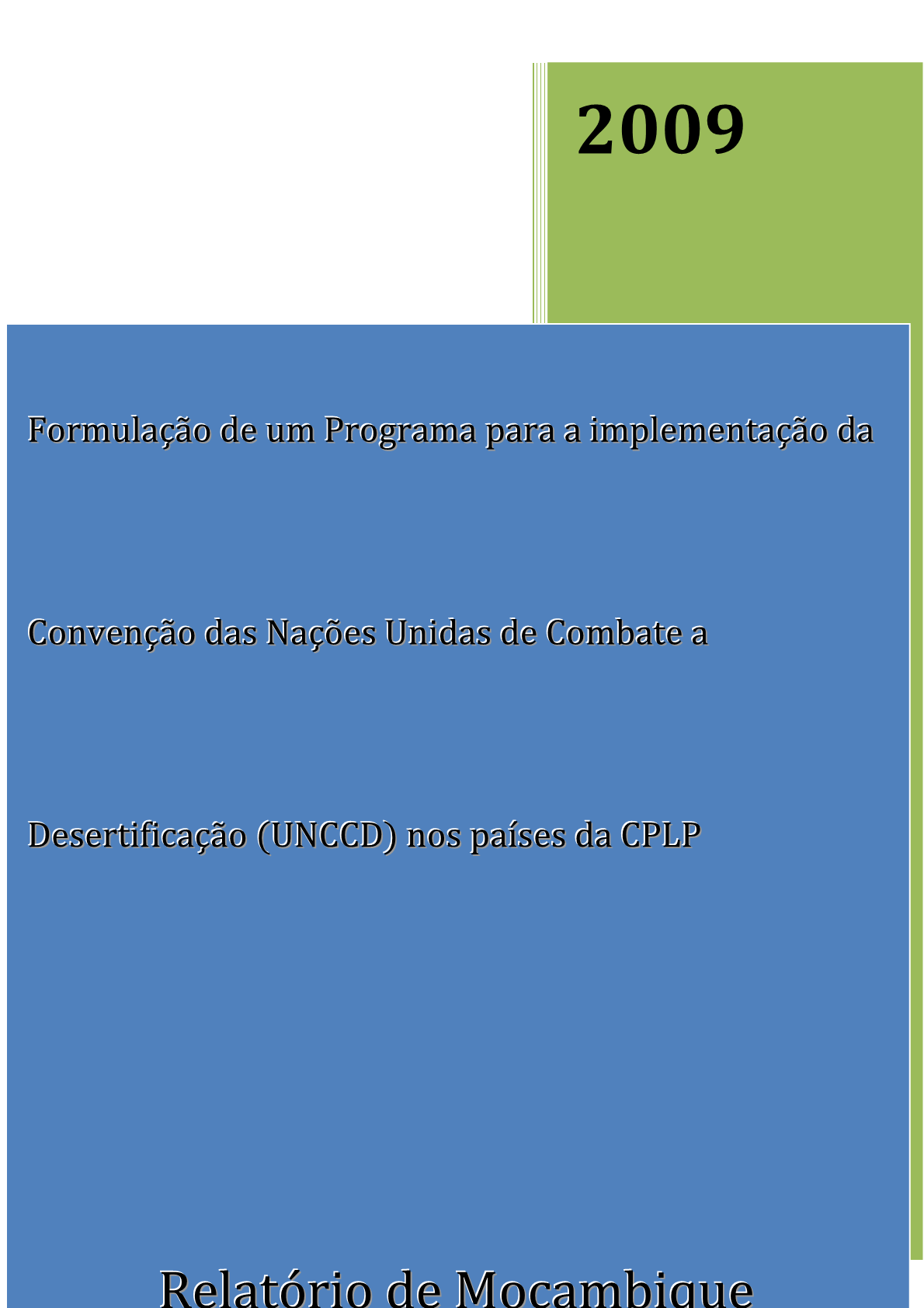Ordenación sostenible de tierras y recursos hídricos: lucha contra la desertificación y prevención de la degradación de las tierras - ECA 32/02/2
Meeting Name: European Commission on Agriculture
Meeting symbol/code: ECA/32/02/2
Session: Sess. 32
A Great Green Wall of Resilience
This publication will present efforts by FAO and partners on mapping the intervention area of the Great Green Wall initiative and restoration opportunities based on data gathered through Collect Earth and in support of presenting FAO's effort at COP22 in Marrakech on 14 November 2016.
Desarrollo sostenible de tierras áridas y lucha contra la desertificación
Formulação de um Programa para a implementação da Convenção das Nações Unidas de Combate a Desertificação (UNCCD) nos países da CPLP
A localização geográfica de Moçambique nos trópicos e subtrópicos, faz com que ele seja vulnerável a eventos extremos de origem meteorológica tais como secas, cheias e ciclones tropicais e de origem geológica como é o caso de sismos e tsunamis. Dentre as diversas zonas do país, as áridas, semi-áridas e sub-húmidas secas são as mais vulneráveis, devido à degradação da terra caracterizada por perda persistente de productividade de vegetação, solos e pastagens e exacerbada pelo seu uso inapropriado (UNDP, 1992). As regiões sul e parte do centro do país são as mais afectadas pela seca.
Soil and Water Conservation Strategies in Cape Verde (Cabo Verde in Portuguese) and Their Impacts on Livelihoods: An Overview from the Ribeira Seca Watershed
Severe land degradation has strongly affected both people’s livelihood and the environment in Cape Verde (Cabo Verde in Portuguese), a natural resource poor country. Despite the enormous investment in soil and water conservation measures (SWC or SLM), which are visible throughout the landscape, and the recognition of their benefits, their biophysical and socioeconomic impacts have been poorly assessed and scientifically documented.
Rangelands: Where Anthromes Meet Their Limits
Defining rangelands as anthromes enabled Ellis and Ramankutty (2008) to conclude that more than three-quarters of Earth’s land is anthropogenic; without rangelands, this figure would have been less than half. They classified all lands grazed by domestic livestock as rangelands, provided that human population densities were low; similar areas without livestock were excluded and classified instead as ‘wildlands’. This paper examines the empirical basis and conceptual assumptions of defining and categorizing rangelands in this fashion.
Experiences in monitoring and assessment of sustainable land management
Although sustainable land management (SLM) is widely promoted to prevent and mitigate land degradation and desertification, its monitoring and assessment (M&A) has received much less attention. This paper compiles methodological approaches which to date have been little reported in the literature. It draws lessons from these experiences and identifies common elements and future pathways as a basis for a global approach. The paper starts with local level methods where the World Overview of Conservation Approaches and Technologies (WOCAT) framework catalogues SLM case studies.
Towards a World Desertification Atlas. Relating and selecting indicators and data sets to represent complex issues
Mapping land degradation and desertification (LDD) at the global scale still is a conceptual and operational challenge. The present study has been performed in the frame of the WAD (new World Atlas of Desertification) initiative. The objective of the paper is to test a structured procedure to identify relevant indicators for an effective representation of complex global LDD issues, based on available data sets (both geo-spatial and statistical), and conform to the UNCCD (United Nations Convention to Combat Desertification) requirements.
Correlation between landscape fragmentation and sandy desertification: a case study in Horqin Sandy Land, China
The exact roles of landscape fragmentation on sandy desertification are still not fully understood, especially with the impact of different land use types in spatial dimension. Taking patch size and shape into consideration, this paper selected the Ratio of Patch Size and the Fractal Dimension Index to establish a model that reveals the association between the area of bare sand land and the fragmentation of different land use types adjacent to bare sand land.



